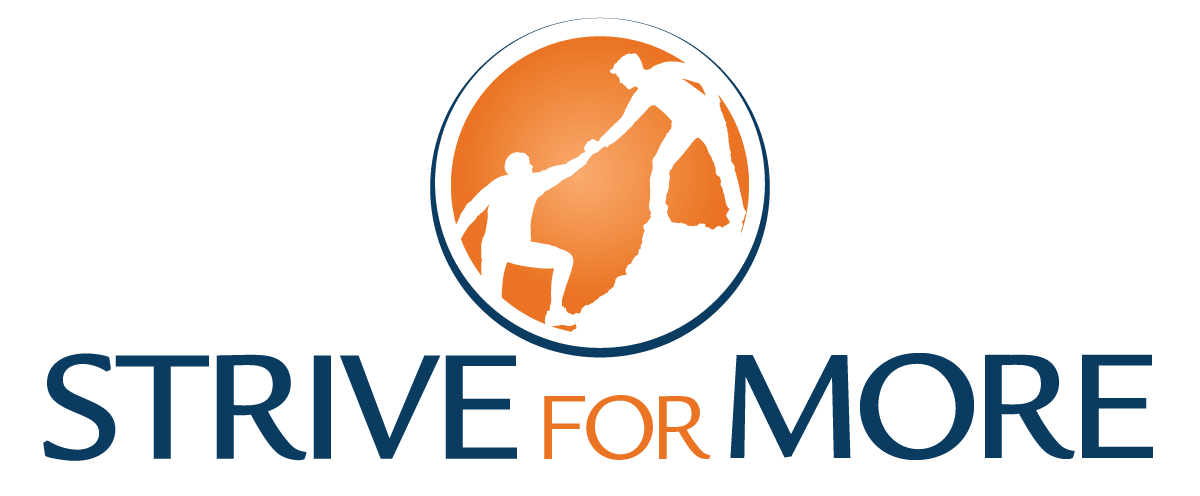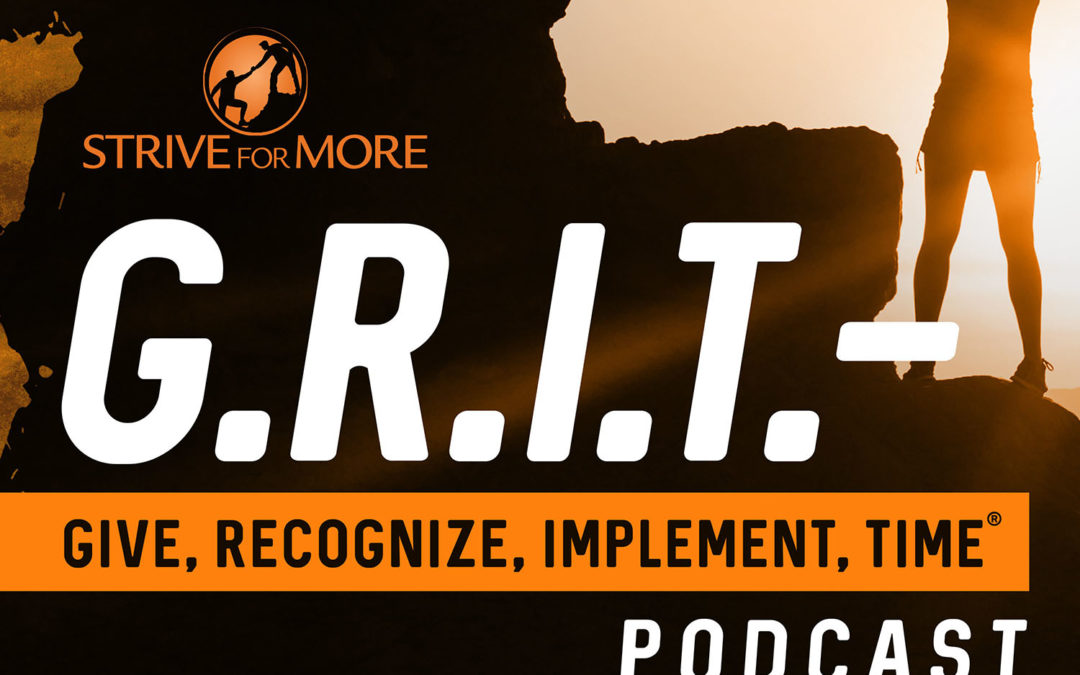Episode Transcript
Hello, everybody. I’m Steve Nathenson, CEO and founder of Strive for More. And today I’m going to ask you a question that I get asked a lot about can we be friends with those we lead? It’s a great question. Can we be friends with them? Should we be friends with them? What does that mean? Can I do it and actually lead them? Great questions. Let’s dig into it.
Let’s talk about, first, the different sides of it. Essentially, I should not be you friend as one side. And I can be their friends and I should be their friends as another side. So, let’s go with the first one.
What’s the stereotype that typically comes with it? Eh, I don’t need to be friends with the people I lead. They don’t need to like me. They just have to do what I say. It’s very transactional. It’s very managerial, right? It’s very task oriented versus people oriented. And as we talked about before when we were talking about leadership, leadership is people oriented. It’s about really resonating with those folks so that you can help them be their best selves and ultimately you’re going to achieve what you need to achieve on a management side because they’re going to do what they need to do as individuals because you’ve harnessed that power within them that’s ultimately going to lead you to where you need to go as well, as well as they are going to get to where they need to be.
So, there’s this stereotype that is, for lack of a better descriptor, old school. I don’t need to be friends with the people they lead, they just listen to me. They’ve got to do what I have to do. There’s going to be dissonance in that style of leadership and people are going to recognize for what it is. You don’t necessarily care about me as a person. The only thing you care about is the work. For those who are listening, have you ever worked with somebody of that nature? Whether it’s at work, whether it’s say, a coach on a sports team, whether it’s in a community, whether it’s in a project that say, you and your friends have been doing. Whatever setting it may be, at some point in our lives we’ve all, unfortunately, experienced that kind of transactional management versus leadership.
So, I want to bust that myth that we can’t be friends with those that we lead because we can. We absolutely can be friends with those that we lead. It is possible. Now that doesn’t mean I have to go out to the bar with them after work. That doesn’t mean I have to go to their kid’s birthday parties. You can certainly do that but that’s the perception, right, that we have. Well, if I’m friends with them then I can’t be hard on them when I need to be or I can’t give them feedback. It’s going to cause dissonance. They’re going to be upset with me or not make it easy on me to be able to give them what I need to do as a leader.
If we remove the stereotypes from that for a second and we get back to the heart of what we’ve talked about leadership wise, which is really focusing on people, we can see that there is a path forward to be friendly with our folks, to be friends with them and to actually successfully get to where we need to go. And it starts with the context we create around it.
I’m going to share an example that my triathlon coach used with me because she did a wonderful job at setting the context for us to work together. We’ve been friends for years and we’ve had a strong relationship. And when I took her on as a coach she really did a great job of setting boundaries. She told me that we are very friendly, we have a great, strong friendship and as we embark upon her being my coach we’re not going to shift that. That’s going to maintain but there are going to be points where she will be my coach. And part of that process for her is to help me see what is it that I can work on to get to where I need to go, part of it is her pushing me in that right direction, helping me expose what I need to expose to get better and having those conversations at that point.
So she set those boundaries. And that’s one of the things that we can do as leaders with people who we have a strong friendship, a connection with is to set that context and that boundary from the beginning. We don’t have to be purely transactional. We don’t have to be just all about the tasks or, quite frankly, create these self fulfilling prophecies that it’s going to be awkward and it’s not going to be possible to give them, say constructive feedback or help them when there’s trouble areas because we have that friendship and they’re not going to take it well. That’s up here. That’s in our minds. We’ve created that. What can we do to set that context and clear the air from the beginning that allows us to set that context?
I’ll give you another great illustration. I had a wonderful boss in the FBI. I had a lot actually that were really good leaders. And one of them said, “You know what, I’m not the kind of person that gets upset. I’m not the kind of person that yells. We’re going to have a conversation.” And the beauty in that was it set the stage for us to have a good, strong relationship personally, as well as professionally. That as needed, she would sit down with me and we’d have conversations about things that happened and give me the feedback that I need to do in a way that resonated because I knew at certain points, right, this is, quote/unquote, boss mode. There’s something there we need to handle and that’s what we can shift into.
So setting the context is very important to allow us to have a friendly relationship with those that we lead and be able to step into the, quote/unquote, boss mode when we need to do it. If we lay that groundwork and we actually have that conversation both parties then will inherently buy into setting that context. So, it is absolutely possible to be very friendly with who we lead, to joke around, to have a good, strong, positive personal relationship and then be able to step into that mode of boss mode. To give that feedback, to help them grow, to talk about maybe issues that have arisen. It all starts with calling it out, setting that context, laying the groundwork.
We get in trouble as leaders by not doing that, by going too far to the extreme mentally either that we can’t do it, it’s not possible, I’m not going to be friends with them at all. Or it’s going to be a big deal and issue because we timed all this history of working together and now I’m responsible for leading them. And we never address it because we think it’s going to be too awkward or it’s going to be too hard to handle. If it goes unsaid that’s absolutely going to be true. But if we set that context and that boundary from the beginning we can and we will overcome that hurdle.
So, if there’s anything to take away from today is that it is absolutely 100% possible to be friends with those that you lead, to have strong personal relationship with them while also being able to do what you need to do as their leader and as their boss when the time comes because you set that boundary and the context to be able to do so. That is one of the fundamental things that is valuable, not only in leadership, but also in other areas of life is opening up the conversation, putting into context and agreements so that both parties are on board and on the same page and then can move forward and handle the things as they need to be handled, as they arise. It makes it so much easier when we actually have conversation.
So, until the next time, be the movement in your life and remember, it’s only impossible if we think it’s impossible.
Listen to all of our episodes here.
Learn More About How We Help You Harness Your Resilience Through G.R.I.T. – Give, Recognize, Implement, Time®& Find More Actions You Can Take Right NOW!
To learn more about our signature coaching approach which DOES help people all over the world stay focused, overcome, and achieve, please click here.
Want to Assess Your G.R.I.T. – Give, Recognize, Implement, Time® & get a tangible gauge of key human characteristics that WILL make you successful?
Take our G.R.I.T. – Give, Recognize, Implement, Time assessment now and find out!

